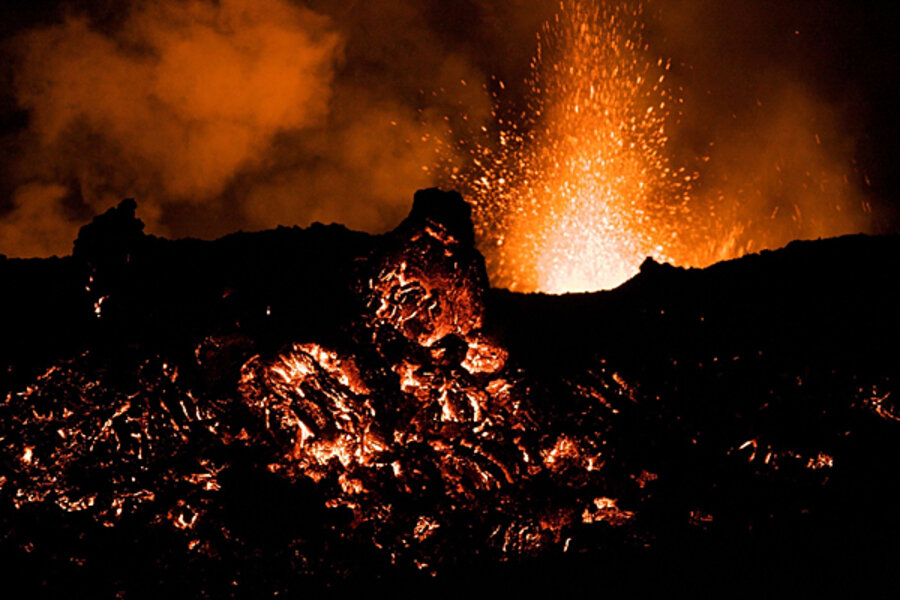Iceland volcano ash cloud: When will Eyjafjallajökull eruption stop?
Loading...
The most pressing question for European travelers is the one that is nearly impossible to answer.
When will the Eyjafjallajökull eruption stop and its ash cloud go away?
For scientists watching every burp and hiccup from Iceland's volcano, the best they can do is essentially hold an ear to the subterranean railroad track beneath Eyjafjallajökull (pronounced: AY-ya-FYAT-la-yur-kutt).
The rumblings of small earthquakes can suggest that magma is still welling up from the bowels of the earth, feeding the eruption. The distension of the mountain itself – measured through global positioning system devices – can also provide hints as to whether the volcano is swelling or deflating.
As of last week, scientists were still measuring dozens of small earthquakes beneath the volcano, suggesting that no end was in sight.
All of which leaves European air travelers worrying about Icelandic tephra as much as whether they can stow their carry-on in the overhead compartment.
If history offers any guide, Eyjafjallajökull won’t cease to become Europe’s longest four-letter word until May 2011. The last time Eyjafjallajökull erupted, in December 1821, it did not stop until January 1823 – about 14 months.
While yearlong volcanic eruptions are not the norm, they are not unheard of. Some estimates suggest that 20 percent of eruptions last more than a year.
The Pu’u O’o eruption at Kilauea on the Big Island of Hawaii, for example, has been spewing lava continuously since 1983 – enough to cover Washington, D.C., in more than 60 feet of it. Far more impressive, however, is the volcanic Italian island of Stromboli, which has been erupting without interruption for more than a millennium.
But as neither Kilauea nor Stromboli has a glacier sitting atop it – which is the fuel for Eyjafyallajökull’s ash clouds – neither is likely to trouble London Heathrow.
Related:





